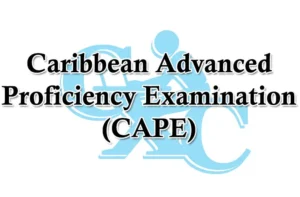
In the previous article we examined the genesis of the journey, information gathered from research and the impact of the COVID 19 pandemic on CXC preparations. In this second piece we will be examining the methodologies that were applied, and how learning challenges were bridged for the students’ development in preparation for CXC. Policy recommendations will also be outlined.
The hard work began
Now that we were back face-to-face as the COVID 19 pandemic was dying down, that meant it was much easier to assess their academic level based on previous work given. This was executed by reviewing their grades and the content area they had covered. I also had conversations with them to ascertain their level of thinking, their mental and learning processes, and the vocabulary at their disposal. Diagnostic assessments were employed, reviews of data were conducted to ascertain weaknesses among students, and adjustments to teaching strategies were employed. Different lessons catered to the different learning styles, whether tactile, visual, auditory and so on, or in instances where all could be activated at once, such as in Narrative Writing, that was done.

Students were also exposed to CXC past paper questions, given strategies and techniques as to how they could answer the said questions. To improve their comprehension level, students were given grade 11 and beyond comprehension activities, even though that task is no longer included on the CSEC Paper 2. This was to help with the development of critical thinking skills and vocabulary development. Additionally, rigorous mock examination simulations were conducted based on CXC standards.
Now remember, the preliminary assessment revealed that because of their age, and lack of post-teen life experiences, this meant that I was now tasked with an academic challenge to bridge both their educational and experiential gap.
Bridging the Gap
To bridge the gap, I would take a copy of The Daily Gleaner, for students to read at the beginning of classes. Students would volunteer themselves or would be selected to read an article. They were given aspects of the newspaper to select articles that caught their interest. Then they would be required to come to the front of the class and read or to give a summary of what they read and indicate their stance on the article and explain why they had taken such a position. Students’ reading and presentations were monitored such as ensuring students were pronouncing words accurately. Deep conversations and debates were engaged about the content of the article, where students would give their views, or just ask more questions based on what was being read. Students were encouraged to watch the news for the purpose of being aware of current affairs, which were also discussed in class. Not only news, but movies or documentaries were discussed, and students were encouraged to watch them on the internet. A few students actually did watch the recommendations. At times we as a class even watched clips together which helped to enhance our discussions. Students were also given the chance to share their life experiences relevant to the topic at hand or to reinforce or refute a point.

The chances to extend class beyond the usual schedule were thoroughly utilized. For instance, additional sessions were held right before the school bell rang. Rather than ending the class, it continued for an extra hour or two. Furthermore, students were expected to participate in several Saturday classes to assist with the mock exam simulations mentioned.
Another key factor that I think is worth highlighting is that a few of my colleagues and I have trained some of these same grade 9 students in debate competitions. These students have been to finals against Morant Bay High, even at grade 9.
Current Impact
Fast forward to the year 2025 where the students are now in grade 11. Having graduated just this past June, I am delighted to see that they have progressed to tackle additional subjects. Several of them pursued additional CXC subjects in grade ten. By the time they reached grade 11, a significant number had already completed a few subjects, which accounts for approximately 30%. I also leveraged their skills and experiences by assigning many of them to assist their peers who were encountering CXC for the first time in grade eleven. The students receiving this assistance were very open to the support from their classmates. Furthermore, a small number of students who achieved a grade three in their CXC exam expressed their desire to improve their scores and opted to retake the exam this past May. They conveyed to me their increased confidence and their expectation of achieving grades one or two in the exam.Conversely, other students were satisfied with their grades and experiences, choosing to apply that knowledge to other subject areas. In discussions with teachers regarding the attitudes of these students, it was noted that due to their experience and confidence, most were able to submit their other SBAs at the grade 11 level punctually.
They conveyed to me their increased confidence and their expectation of achieving grades one or two in the exam.
I am also delighted to observe that within the group of grade 11 students, despite facing personal challenges such as the loss of family members and difficulties in relationships with family or peers, they managed to sustain a commendable level of focus and discipline to complete their education. The discipline they experienced in grade 9, not solely instilled by me but also reinforced by other educators, parents, and various stakeholders, contributed to establishing a new outcome within the school. This demonstrates to us that we can alter the narrative by pushing our limits and not restricting the potential of the students before us.
The discipline they experienced in grade 9, not solely instilled by me but also reinforced by other educators, parents, and various stakeholders, contributed to establishing a new outcome within the school. This demonstrates to us that we can alter the narrative by pushing our limits and not restricting the potential of the students before us.
The discipline they experienced in grade 9, not solely instilled by me but also reinforced by other educators, parents, and various stakeholders, contributed to establishing a new outcome within the school. This demonstrates to us that we can alter the narrative by pushing our limits and not restricting the potential of the students before us.
Recommendations
Based on the foregoing action research, there are four recommendations that emanate from my experience. Recommendation one is targeted at practitioners, recommendations two to four are targeted at policy makers and administrators.
- Based on this action research, I would suggest we find ways to expose students who are more disadvantaged in the teaching and learning process, to CXC examinations, as a means of helping to provide purpose, as well as grounding for students. Of course with better designs and pilots, we could find a successful formula.
- I also recommend that schools consider implementing a two-tier matriculation system. Under this system, students who have completed their CXC subjects by or at grade nine would have the opportunity to start higher-level courses, such as Caribbean Advanced Proficiency Examination (CAPE) or technical courses related to Human Employment and Resource Training (HEART) Trust, beginning in grade ten. They could then finish these courses by grade eleven (two years). This structure would enable them to complete these courses by grade eleven, allowing students to pursue their academic interests at an accelerated pace. Consequently, they would be better positioned to access universities or enter the workforce immediately after high school, rather than spending additional time in sixth/upper-sixth form. Alternatively, students could choose to follow the traditional route of matriculating in grade eleven. However, adopting this recommendation would require a comprehensive review and restructuring of existing pedagogical systems and approaches.

- It is recommended that every teacher, beginning with form teachers, particularly in rural communities, be provided with a minimum allocation of $20,000 (Jamaican dollars) dedicated to student development within their class. This allocation would enable teachers to effectively facilitate activities such as class awards, educational film viewings, learning charts, and field trips without incurring personal expenses. Such support would not only enhance the learning experience for students but also ensure that teachers can meet the requirements outlined in the new appraisal document without undue financial strain.
- There is an urgent need for schools to be built out with modern infrastructure to facilitate modern teaching methodologies. This would be beneficial to the learner who receives the product on one end, and improve the teachers’ development and delivery of the said product called education. Unfortunately this is still a griping issue within the education sector.
Conclusion
The above experiment should be telling to us as educators. It is not merely prescriptive on the matter at hand, but rather viewed as an instrument to guide policies and teaching strategies to emit a more practical outcome. This is like hearing that your daughter is too bright for grade two, but is really performing at a grade 5 level. We can either force that student to “be still” and learn with the others, or allow that child to roam to other classes that are more challenging, or officially move the child up to grade five where she would function competently at that level. Stagnating a child’s development so that we can have bulk data to boast about the performance of schools’ CXC performance should not be the main concern of educators. We can chart new and ingenious methods to aid in the development of our students. That is where I think the educational transformation needs to be flexible in advancing our learners. We are already living in a flexible career-driven market; the static “one career for life” no longer applies in this new paradigm shift in economics and education in 2025.
Stagnating a child’s development so that we can have bulk data to boast about the performance of schools’ CXC performance should not be the main concern of educators.
Mr O’Neil Allison is an educator with over 15 years of experience. He is the former president of the Philosophy of Education Movement of the Caribbean (PEMCA), and holds a Master’s Degree in Educational Planning and Policy.
